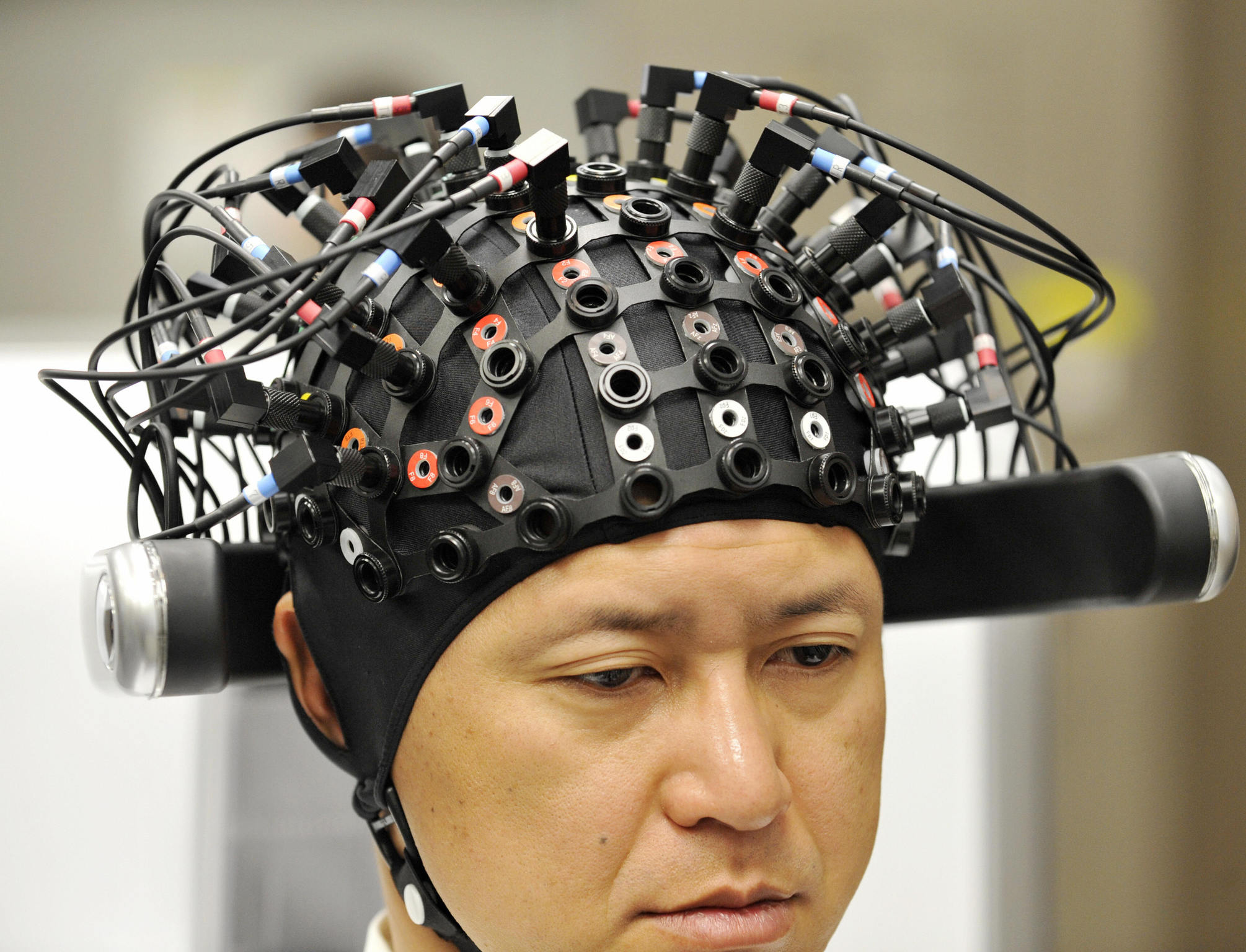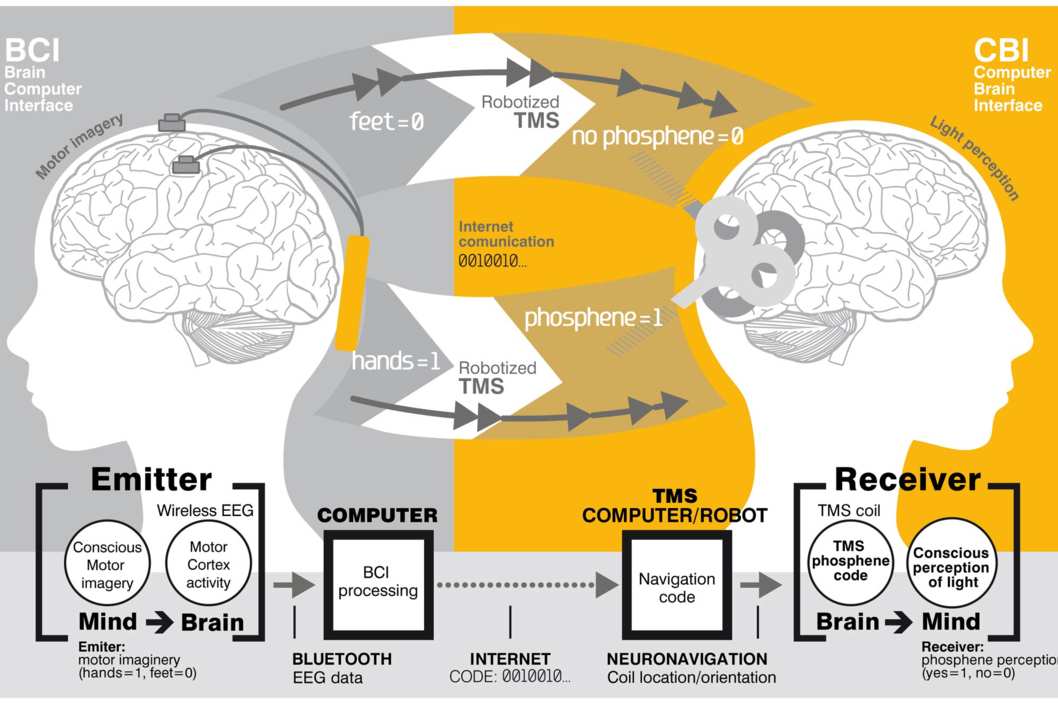'Hola' at your brain: first brain-to-brain interface is a step towards digital telepathy
In a ground-breaking experiment scientists have managed to transmit words ('hola' and 'ciao') a distance of 5,000 miles without computer interfaces

Scientists have taken an important step towards achieving ‘digital telepathy’ by sending information directly from one individual’s brain to another without the use of any intermediary interfaces.
Subjects in the ground-breaking experiment were located 5,000 miles apart in India and France and fitted with caps monitoring electrical signals in the brain. They were then instructed to ‘spell out’ the words ‘ciao’ and ‘hola’ in binary by envisioning different movements to represent 1s and 0s (moving their hands for 1 and their feet for 0).
The electrical signals associated with these movements were then recorded and transmitted, via the internet, directly into a receiver’s brain, with these transmissions used to stimulate their visual cortex so that the 1s and 0s appeared as points of light in different parts of their peripheral vision. The receiver then noted the binary and translated it back into words.
“It is kind of technological realisation of the dream of telepathy, but it is definitely not magical," theoretical physicist and co-author of the study, published in PLOS One, told AFP. “We are using technology to interact electromagnetically with the brain."

Over the past decade scientists have become increasingly adept at monitoring brain activity and using the different electrical signals associated with ‘types’ of thought (eg physical movement) to control everything from drones to prosthetics.
This technology is known as a brain-computer interface or BCI, but this new study – carried out by an international team from Harvard University, Starlab Barcelona, and Axilum Robotics in France – is the first to transmit a message directly from one brain to another, although it is quite different from sci-fi technology that plucks whole words and sentences ‘directly’ from conscious thought.
"We wanted to find out if one could communicate directly between two people by reading out the brain activity from one person and injecting brain activity into the second person,” said co- author Alvaro Pascual-Leone, professor of neurology at Harvard Medical School.
"One such pathway is, of course, the internet, so our question became, 'Could we develop an experiment that would bypass the talking or typing part of Internet and establish direct brain-to-brain communication between subjects located far away from each other in India and France?'"
Join our commenting forum
Join thought-provoking conversations, follow other Independent readers and see their replies
0Comments